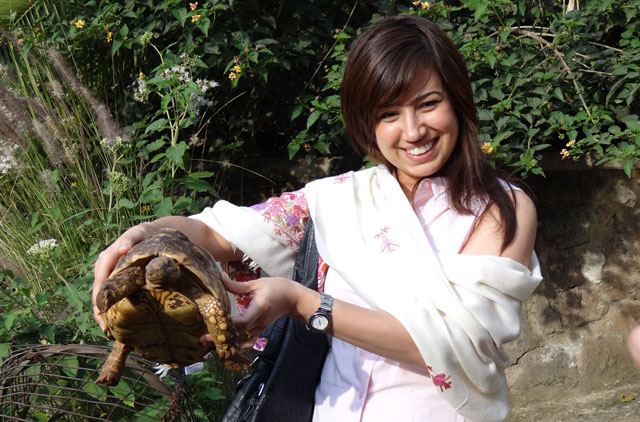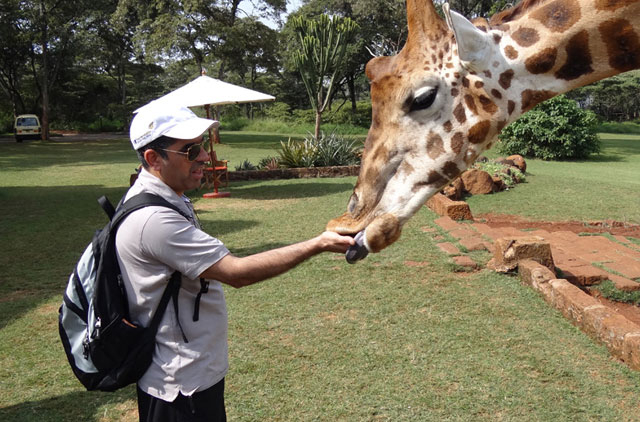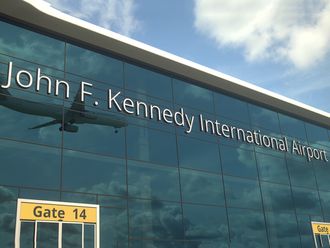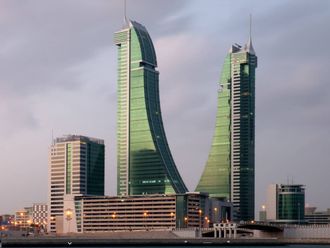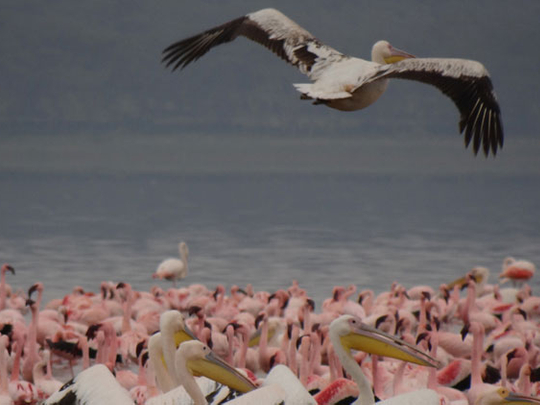
Manama: “This is much better than Disney’s Lion King or the National Geographic channel.”
From her seat in the Safari van, Amal Al Gharibi cast a deep gaze upon the two lions lazily chewing on lump of raw meat under the trees. The dead zebra was only a few metres away.
“Shall we drive on?” the driver asked, not sure whether the public relations executive and the rest of the group wanted to move on.
For the Kenyan driver, it was obvious that the fascination of city dweller Amal with the sight of the wild lions with their manes wrapped around their shoulders like rugs, exuding an aura of impressive raw force, could not be broken. Even though the wild cats were lolling, and not in action, no other sight would be match for it.
Hours earlier, Amal had dumped her suitcase at the historic Stanley Hotel in the heart of Nairobi, fresh from the Gulf Air plane that had flown directly from Bahrain, making it comfortably easy and irresistibly tempting for travelers to reach a safari country.
She then headed to the Lake Nakuru National Park, 150 kilometres north west of the capital, Kenya’s first rhino sanctuary that started off small, only encompassing the lake and the surrounding mountainous vicinity, but has been extended to include a large part of the savannahs.
On the way, she was fascinated by the sight of the acacia, the umbrella thorns and he euphorbia trees dotting the landscape and by the Great Rift Valley, the longest rift on the surface of the earth, running from northern Syria in southwest Asia to central Mozambique in East Africa, a distance of around 6,400km.
The valley neatly divides Kenya down its length from the Ethiopian border in the north to the Tanzania border in the south. It was formed millions of years ago after geological tension in the earth’s crust caused deep depression and forced the sides upwards.
The park, located in the Kenyan part of the Great Rift Valley, around Lake Nakuru, is relatively small in size, but has a remarkably rich biodiversity.
Its birdlife comprises more than 500 species and the avian highlight is the millions of flamingos that aggregate on the shallow soda lake.
Their sight prompted famous US ornithologist Roger Tory Peterson to term it “the most fabulous bird spectacle in the world.”
Amal, upon seeing the myriads of fuchsia pink flamingos after entering the park, agreed wholeheartedly. Holding her binoculars, she could not cast her eyes away and kept admiring the pinkish wave of birds in the highly alkaline turquoise green water and along the lake shore.
“This is amazing,” she uttered, overwhelmed with emotion and mesmerized by what she was admiring. ”Africa is crammed with wonderfully beautiful sights and it is really difficult for any view to stand out. But this is so special, so marvelous,” she said, beaming into a smile and turning back to stare at the gathering of long-legged, long-necked greater and lesser flamingos along the shoreline, feeding on algae, created from their droppings mixing in the warm alkaline waters, and plankton.
Alongside the avian attraction, pelicans and cormorants, two large piscivorous birds, live in the area, encouraged by the presence of alkali-tolerant tilapia fish that were introduced in the lake in 1953.
The park is also famous for being probably the best place to watch the white rhino.
“They were endangered species, and in the 1990s, a dozen white rhinos and 20 black rhinos were translocated to the park,” the guide said in a soft, almost inaudible voice. “They have since bred and now form larger populations.”
The park was also used to help protect the Rothschild giraffe, the rare western race found in Kenya alongside the Somali and Masai giraffes.
The Rothschild giraffe is named after British zoologist Walter Rothschild, who was the first to comprehensively describe this giraffe subspecies.
In Kenya, it has a special status and a short trip to the Giraffe Manor in the suburbs of Nairobi offers a unique chance to be close to the world’s tallest mammal.
A small exclusive hotel, the manor is a remarkable place with Rothschild giraffes vying for the guests’ attention at the breakfast table, the front door and even their bedroom window.
“I never thought I would get so close to these gorgeous, but intriguing mammals,” Amal said as she took some pellets and tentatively extended her hand to feed a giraffe.
“I am sure this is the only place in the world where you get acquainted with giraffes and feed them, and I am glad I have made it to this iconic symbol of Kenya where you wake up to giraffes staring into your second floor bedroom window early in the morning, stretching their neck and head and expecting you to feed them some pellets,” she said as she looked at the Victorian style building dating back to the 1930s and reminiscent of the early days of Europeans in East Africa.
A visit to the nearby Kazuri Bead Factory offers insights into how the community of single mothers is being empowered to rebuild their lives.
The factory, founded by Lady Susan Wood in 1975, is known for its beautiful, hand-painted beads made from clay.
Kazuri is the Swahili word for ‘cute’ or ‘small and beautiful’, the guide said. “It was created for single mothers otherwise cannot support themselves or their children. Many walked out on unhappy unions or were divorcees or widows and had to fend for themselves and their small families,” she said, touring the workshop where the women despite their personal hardships are particularly cheerful.
Clay beads are baked in large ovens before they are sent to tables where the mothers paint them or thread them onto wire.
The Kenyan food experience is best lived in the Carnivore, an open air all-you-can-eat meat buffet restaurant in the Langata suburb of Nairobi that has become a standard stop for those keen on some of the most exotic meats in the world.
All types of meat, including wild game, are roasted on traditional Maasai swords (skewers) over a huge and spectacular charcoal pit at the entrance of the restaurant that serves as the kitchen.
The swords wrapped with a different type of meat are then carried to the guests’ table and waiters carve amounts of the meat onto cast iron plates. A selection of exotic sauces to go with the meat feast is sitting on the table.
Zebra, ostrich, goat, impala, lamb, chicken wings, chicken tikka, sausages, spare rips, sirloins and beef are tender whereas hartebeest and crocodile are chewy and require meat-eaters to work the jaw.
“Karibu” is the key word – Welcome in Swahili.


